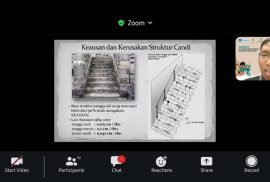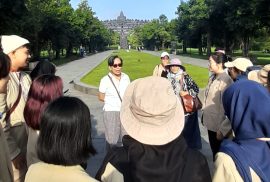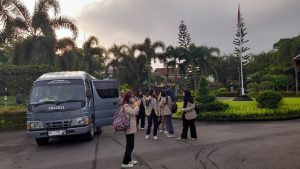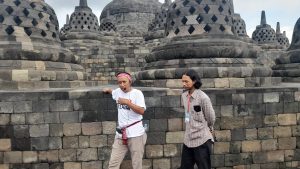On Tuesday, March 19, 2024, Archaeology students of Faculty of Cultural Sciences UGM participated in an online workshop titled, “Borobudur World Heritage Site in Cultural Landscape Portrait” held by UNESCO Jakarta. This online workshop invited students from Universitas Gadjah Mada, Tidar University, and Atma Jaya University. This activity aims to enable students to learn more about the impact and influence of Borobudur Temple on the cultural landscape in the area around Borobudur Temple, both tangible and intangible in the scope of culture.
The digital workshop began with a speech by Ms. Moe Chiba, Head of the Culture Unit, UNESCO Jakarta. Followed by presentation sessions by Heri Setiawan from the Ministry of Research, Technology and Higher Education Indonesia, Cultural Heritage Museum, Panji Kusumah from the Eksotika Desa community, hosted by Hairus Salim, Anthropologist from Universitas Gadjah Mada. An introduction to the impact and influence of Borobudur Temple on the cultural landscape was reflected on the history and efforts made. The preservation of Borobudur Temple as a cultural heritage, whether for local, national, or international communities through the designation of world heritage by UNESCO No. 592 in 1991.
The uniqueness of Borobudur Temple in its designation as a world heritage site by UNESCO is in the criteria that have been achieved. Generally, a cultural heritage site is designated as world heritage by fulfilling one of the ten cultural criteria, but Borobudur Temple fulfills three criteria (criteria 1, criteria 2, and criteria 6). The criteria achieved build Borobudur world heritage in a historical narrative that represents the brilliance of the creativity of the Borobudur community in its history of building the temple along with the cultural traditions of local values that are still inherent. This uniqueness is also supported by the existence of rural areas around the temple area which also provides unique characteristics of Borobudur Temple.





